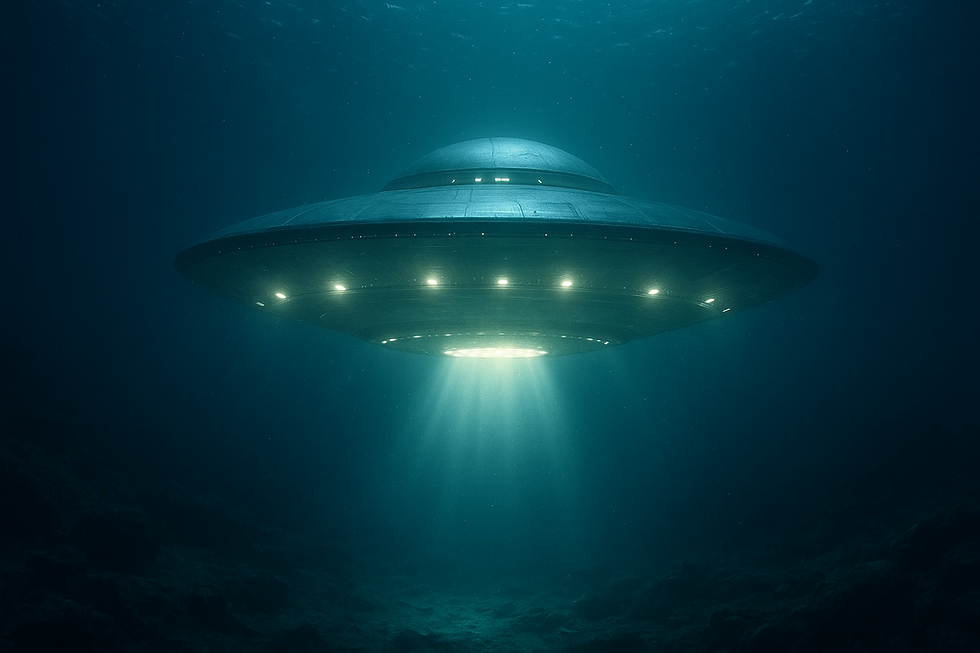What is really happening with the 3I ATLAS?
- Brian Done

- Nov 7
- 3 min read
A New Interstellar Mystery Arrives
In late 2025, astronomers around the world turned their telescopes toward a dim but fast-moving object cutting through our solar system. Being designated 3I/ATLAS, this object is only the third confirmed interstellar object ever detected, after the famous ‘Oumuamua in 2017 and Comet Borisov in 2019. But 3I/ATLAS isn’t just another cosmic visitor, it’s stirring up serious debate in both scientific and UFO research communities.
Why? Because its motion, structure, and brightness pattern don’t completely fit what we’d expect from a normal comet or asteroid. The question on everyone’s mind: Could 3I/ATLAS be something more than just a natural space rock?

What Makes 3I/ATLAS So Unusual?
NASA’s early observations confirmed that 3I/ATLAS follows a hyperbolic trajectory, meaning it’s not bound to the Sun’s gravity, meaning it came from deep interstellar space and will leave our solar system, never to return. But several details have made researchers scratch their heads:
Non-gravitational acceleration: Like ‘Oumuamua, 3I/ATLAS appears to accelerate in ways that don’t match the expected path of a purely natural object. While outgassing, or jets of vapor from melting ice, could cause this, astronomers haven’t detected the usual gas or dust emissions typical of comets.
Strange color variations: Observations show light reflecting off the object changing in hue from reddish to pale gray, suggesting unusual surface material or an artificial reflective coating.
High albedo (reflectivity): 3I/ATLAS reflects more sunlight than most comets, raising questions about whether its surface is metallic or composed of an unknown compound.
The Avi Loeb Connection: Could It Be Alien?
Harvard astrophysicist Avi Loeb, already known for suggesting that ‘Oumuamua might have been an alien probe, has once again entered the debate. Avi Loeb proposes that 3I/ATLAS could be a fragment of advanced extraterrestrial technology, possibly a piece of a defunct interstellar sail or debris from a larger alien craft.
He points to the object’s odd acceleration and reflectivity as potential evidence. According to Avi Loeb, natural explanations are running thin, and it’s time to consider technological origins without stigma.
However, most mainstream astronomers urge caution. They argue that unknown natural processes, especially involving icy bodies in extreme environments, might easily account for 3I/ATLAS’s peculiarities.
Still, the coincidence of two interstellar objects, both of which are strange, appearing within a few years of each other, has reignited discussions about whether the galaxy could be teeming with alien artifacts drifting between stars.
NASA’s Stance and Upcoming Data
NASA and the European Space Agency are tracking 3I/ATLAS closely. Recent spectral readings suggest traces of volatile elements, possibly methane or carbon dioxide, indicating it may be a cometary body with a crust hardened by cosmic radiation.
New data from the James Webb Space Telescope and the Vera Rubin Observatory are expected soon. These could help determine the object’s composition, spin rate, and whether its odd acceleration is caused by outgassing or something more exotic.
NASA stresses that 3I/ATLAS poses no threat to Earth with its closest approach is still millions of miles away. But its significance lies not in danger, but in discovery.
The Bigger Picture: Are We Being Watched or Just Observed by Nature?
The excitement around 3I/ATLAS goes beyond one object. It reflects humanity’s growing fascination with interstellar visitors and the blurred line between science and speculation.
Each new interstellar object that enters our solar system from the stars gives us a rare glimpse into the building blocks of distant planetary systems and possibly, a chance to detect signs of alien engineering.
Even skeptics admit that the possibility, however remote, of artificial origins cannot be completely ruled out until we gather more data. After all, the line between the natural and the technological may look very different when seen on a galactic scale.
Final Thoughts: Cosmic Coincidence or Galactic Message?
As of now, the scientific consensus remains cautious: 3I/ATLAS is likely a natural interstellar comet with unusual properties. But the public imagination has already run far ahead, fueled by questions that science itself cannot yet answer.
Why do these interstellar objects keep surprising us?
Could they be evidence of something larger moving between the stars?
And if 3I/ATLAS isn’t just a rock… what then is it?
Whether 3I/ATLAS turns out to be a comet, a cosmic fluke, or a relic of another alien civilization, one thing is certain: it reminds us that we are not the center of the universe. We’re just beginning to notice the traffic passing through our cosmic neighborhood.





Comments